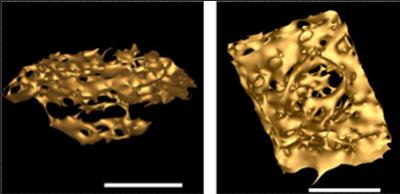
A University of Queensland-led international study has discovered a new type of bacterial structure which has previously only been seen in more complex cells.
Research team leader UQ School of Chemistry and Molecular Biosciences microbiologist Emeritus Professor John Fuerst said the study had found pore-like structures in a bacterium called Gemmata obscuriglobus.
“The pore-like structures appeared embedded into the bacteria’s internal membranes, and showed some structural features similar to those in more complex organisms,” he said.
“This is a remarkable evolutionary finding, since most bacteria do not possess these structures.
“Finding nuclear pore-like structures in the bacterial species Gemmata obscuriglobus is significant for understanding how the cell nucleus and the pores embedded in its membrane envelope could have evolved - a major unsolved problem in evolutionary cell biology."
Professor Fuerst said the bacterium, which was first isolated from Maroon Dam in South-East Queensland in 1984 by UQ researchers Dr Peter Franzmann and Professor Vic Skerman, now constituted one of the most complex bacteria known.
He said the finding suggested that the evolution of complex cell structures may not be unique to eukaryotes, which are organisms containing a nucleus and other structures (organelles) encased in a membrane.
 “The research finding is consistent with previous data my lab has published indicating that the Gemmata obscuriglobus bacterium contains a nuclear body compartment, which parallels the eukaryote nucleus.”
“The research finding is consistent with previous data my lab has published indicating that the Gemmata obscuriglobus bacterium contains a nuclear body compartment, which parallels the eukaryote nucleus.”
“The results are of evolutionary significance, since the origin of eukaryotes is a major event in life’s history,” he said.Professor Fuerst said nuclear pore complexes (NPCs) were important in transporting molecules between the nucleus containing the DNA and the rest of the cell contents in eukaryote organisms such as protozoa, fungi, animals and plants.
“They are dotted over the surface of the membranes separating the nucleus from the rest of the cell and enable communication between the nucleus and other parts of the cell,” he said.
“Like the membrane-bounded nucleus, NPCs had been thought to be restricted to eukaryotes.”
The study, published in PLOS ONE, has been supported by Australian Research Council Discovery project grants to Professor Fuerst’s laboratory.
Co-authors include researchers from UQ’s Centre for Microscopy and Microanalysis; CSIRO; University of Illinois; andUniversity of Canterbury, New Zealand.



